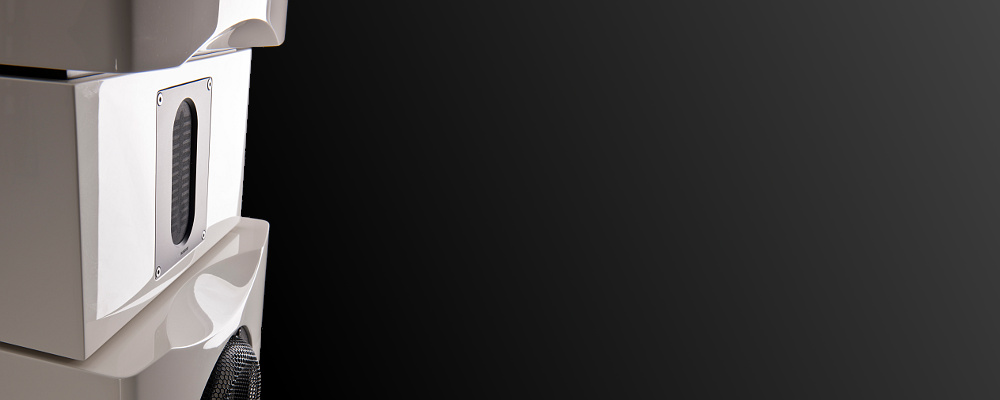The foundation of good sound

The technology of our loudspeakers
Why is the correct step response a proof of time coherence? And why is time coherence not everything, but almost
everything? How does low distortion result in clear sound?
In almost 20 years of research Förster Audio discovered which technology makes loudspeakers sound best, how they
generate the pure, nature-identical sound which reflects unchanged - one-to-one - what the artist has meant.
This technology leads us to our declared objective what sound should be.
-
Time coherence
The step response as acid test
Time coherence, referring to the generation of sound by a loudspeaker, means that the loudspeaker reproduces the provided sound signal true to original. This is by no means trivial, which can be seen by the fact that most loudspeakers fail to reproduce the sound signal true to original.
This can be blamed on the concept of specialized chassis for the reproduction of low, medium and high sounds. This specialized concept ensures an optimum handling of the respective pitch and is therefore welcome. However, the drawback of this specialization is - just as in real life - the lack of team work of the specialists. More specifically, they do not necessarily cooperate if it comes to dividing the borderland which has to be cultivated by two specialists so as to guarantee continuous generation of sound. If no common ground is reached, wherein everyone must give in for the sake of harmony, i.e. if need be has to react a bit later or less loud, the sonic result is patchwork.
The expert talks about time and amplitude errors and uses the tool „step response“ as a proof (read more below). Unfortunately, determining the errors does not suffice. Rather, these also have to be eliminated. Here the hitch is often the implementation, the know-know. Therefore, „close your eyes and hope for the best“ seems to be the motto of numerous loudspeaker manufacturers. The customer will hopefully not notice it, since these reproduction errors occur frequently. However, our products are different.How can one differentiate between time-coherent and not time-coherent?
The listener perceives time coherence as clear, natural sound. If loudspeakers do not operate time-coherently, the listener has the feeling that the sound reproduced by them is impure and that the music resulting from the sound is disharmonious, since sounds reproduced like that do not occur in nature.
Another advantage of time coherence can be seen in the precise spatial and clear reproduction of sound corresponding to the recording location. Loudspeakers that are not time-coherently adjusted also convey sonic spaciousness. However, this has nothing to do with the spaciousness the sound mixer recorded. Rather, this is a pseudo-spaciousness far away from the original Hifi ideals.Moving voices
Another drawback of loudspeakers that are not time-coherently adjusted is that the sound source seems to move in the room, for example voices seem to move. Just imagine you are in a concert hall and a soprano singer sings the high „C“. The singer does not change her position at the edge of the stage while her voice according to the aria descends into a lower region. Therefore, in the course of the aria the listener in the concert hall localizes the voice of the soprano singer in the same position, i.e. at the edge of the stage. Time-coherent loudspeakers give the same auditory impression. This is completely different in case of loudspeakers that do not operate time-coherently. They give the impression that there is another soprano singer in the rear area of the stage who sings the deeper tones, which strongly confuses the listener at the latest when suddenly higher tones are sung again by the soprano singer at the edge of the stage. In conventional loudspeakers the technical reasons for sound sources moving dependent on the pitch lie only in the fact that in that tonal area in which the bass/midrange speakers and the tweeters reproduce almost the same pitch, the tweeter generates the sound much earlier than the bass/midrange speaker.
Such spatial misinformation of sound sources does not occur in nature. This is why listeners are greatly confused by timing errors of loudspeakers and why music from loudspeakers that are not operating time-coherently is perceived as inauthentic. As a consequence, music coming from loudspeakers is only perceived as authentic if the loudspeakers are adjusted time-coherently.
Loudspeakers from Förster Audio are fastidiously time-coherently adapted for producing nature-identical sound so that music always and everywhere receives what it deserves. -
Step response
For this measurement a measurement signal which is meaningful for the time coherence of the entire acoustic range - a rectangular signal - was sent to the loudspeaker to be tested. Then, this signal was compared to the measurement signal captured via a microphone in front of the loudspeaker. Since the loudspeaker membranes work against the air pressure in the room, the measurement signal captured by the microphone will never be a rectangular signal, but a steeply (similar to a rectangular signal) rising signal, which, due to the damping air pressure, falls rampedly and not steeply like a rectangular signal if the loudspaker operates time-coherently and all his chassis are correctly poled.




In the upper right figure you can see the very unfavorable step response of a conventional 4-way high-end loudspeaker, i.e. of a loudspeaker with four chassis. Viewed from left to right, you can first see the attack and decay of the (correctly poled) tweeter. Then you see the attack and decay of the (correctly poled) midrange tweeter. A bit later you can see the attack and decay of the incorrectly poled bass/midrange tweeter (incorrectly poled chassis show a great downward step). The correctly poled woofer commences considerably later. In total the ramp function of the original signal, a rectangle, can no longer be recognized. The result is a loudspeaker which clearly does not operate time-coherently and which sounds as the step response shows: time-inhomogeneously, without clear sound impression.
As a comparison the step response of the type FA-5 is illustrated at the upper left. You can clearly see a single attack and decay of all chassis in the form of a ramp. A chronological order of the individual chassis as in conventional 4-way high-end loudspeakers is not displayed. Rather, the measurement signal output by the FA5.2 corresponds to a time-coherently operating loudspeaker. As a consequence, music coming out the FA5.2 as well as all other loudspeakers from Förster Audio sounds homogeneously: pure, clear, transparent, to the point, spatial and with natural acoustic colours. -
Low distortion
Non-distortion of sounds
Besides time coherence a low distortion, i.e. non-distortion of sounds, is of major importance for true-to-life sound reproduction.
Each individual loudspeaker chassis is ideal for a certain frequency range, but produces distorted sounds in another frequency range.
Förster Audio uses exclusively the finest single chassis. Filters are applied to the chassis such that they only emit sounds that lie in their ideal transmission range. -
Frequency response
Same volume for all sounds
Linear frequency response, i.e. that every sound, be it a low, medium or high sound, is reproduced with the same volume, can actually be achieved very easily.... plus time coherence
Förster Audio differs from other loudspeaker manufacturers in that Förster Audio realizes both, linear frequency response as well as time coherence. Our loudspeakers produce the correct volume - in all pitches - at the correct point in time. -
Impedance behaviour
Frequency-dependent resistance
Finally, also the amplifier has a strong impact on the reproduction quality of a loudspeaker. The realization of linear impedance behaviour of a loudspeaker ensures that the amplifier sees the same load in all frequency ranges (impedance = frequency-dependent resistance), thus resulting in harmonic sound reproduction.
All loudspeakers made by Förster Audio show linear impedance behaviour. Due to their impedance behaviour, among other things, they are ideally suited for all amplifiers, even for tube amplifiers.
